Should you ask me,
whence these stories?
It began as a simple eight-minute cartoon and then quietly blossomed into a low key four-color franchise that lasted close to two decades. The concept would also feature prominently in an ambitious 1950s era slate of proposed animated features, only to fade back into obscurity almost as quickly as it emerged. This is the legacy of the Disney version of Hiawatha, hero of verse as originated by poet Henry Wadsworth Longfellow.
Longfellow penned The Song of Hiawatha in the mid-19th century. He was inspired by Native American legends, mostly from the Ojibwe peoples in and around the upper Great Lakes region. Ironically, the name Hiawatha was not in fact Ojibwe in origin; it referred to a historical personage associated with the Iroquois. It was a mistake first made by early 19th century historian and ethnologist Henry Schoolcroft, and then subsequently perpetuated by Longfellow's epic poem.
The Song of Hiawatha has long been the object of parody, almost since its inception in 1855. Walt Disney brought such parody to the movie screen, but in a more gentle manner with the 1937 Silly Symphony Little Hiawatha. Disney employed typical Silly Symphony cherub-inspired design to its rendition of a very young Hiawatha, and the cartoon's narrator employed trochaic tetrameter, the same meter used by Longfellow in the original poem. The cartoon is largely derived from just a few lines of The Song of Hiawatha:
Forth into the forest straightway
All alone walked Hiawatha
Proudly, with his bow and arrows;
And the birds sang round him, o'er him,
"Do not shoot us, Hiawatha!"
Sang the robin, the Opechee,
Sang the bluebird, the Owaissa,
"Do not shoot us, Hiawatha!"
Up the oak-tree, close beside him,
Sprang the squirrel, Adjidaumo,
In and out among the branches,
Coughed and chattered from the oak-tree,
Laughed, and said between his laughing,
"Do not shoot me, Hiawatha!"
And the rabbit from his pathway
Leaped aside, and at a distance
Sat erect upon his haunches,
Half in fear and half in frolic,
Saying to the little hunter,
"Do not shoot me, Hiawatha!"
It is essentially here where Disney departed from Longfellow. The more adolescent Hiawatha from the poem goes on to kill the red deer; the cartoon Hiawatha mixes it up with an angry bear and must be rescued by the small forest creatures that his literary counterpart largely ignores. Longfellow's Hiawatha proudly bears home the fallen red dear with its impressive rack of antlers. Little Hiawatha, prone to his pants dropping at inopportune moments, beats a hasty retreat from his overly ambitious hunting expedition.
 Simultaneous to the development of the original Little Hiawatha cartoon, Walt Kelly and Grace Hunnington prepared an additional Hiawatha Silly Symphony entitled "Minnehaha," whose title character was an innocent and sweet young girl. An adult Minnehaha was the lover of Hiawatha in the original Longfellow poem. According to author Charles Solomon, "Kelly and Hunnington considered various adventures for their child characters. Minnehaha might befriend small animals, spoiling Hiawatha's attempts to hunt them; she might fall into a river trying to rescue a doll and be saved by Hiawatha in a canoe. Hiawatha might get caught in one of his own animal traps and escape injury by falling into a pile of blankets that Minnehaha had folded." The proposed short went unrealized.
Simultaneous to the development of the original Little Hiawatha cartoon, Walt Kelly and Grace Hunnington prepared an additional Hiawatha Silly Symphony entitled "Minnehaha," whose title character was an innocent and sweet young girl. An adult Minnehaha was the lover of Hiawatha in the original Longfellow poem. According to author Charles Solomon, "Kelly and Hunnington considered various adventures for their child characters. Minnehaha might befriend small animals, spoiling Hiawatha's attempts to hunt them; she might fall into a river trying to rescue a doll and be saved by Hiawatha in a canoe. Hiawatha might get caught in one of his own animal traps and escape injury by falling into a pile of blankets that Minnehaha had folded." The proposed short went unrealized.Although Little Hiawatha would never reappear again on the big screen after 1937, his tenure as an active Disney character was far from over. Beginning on November 10, 1940, Little Hiawatha became the star of the Silly Symphonies Sunday comic strip, distributed by Kings Features Syndicate. The series was written by Hubie Karp and drawn by Bob Grant. The strip introduced the character of Minnehaha, which was reportedly based on Walt Kelly's original designs. The newspaper strips lasted until July 12, 1942 and were later reprinted in the Walt Disney's Comics and Stories comic book in issues #28-35. In 1944, Minnehaha was the star of her own, albeit brief, series of stories in Walt Disney's Comics and Stories. The series was entitled Little Minnehaha and consisted of three stories by writer-artist Roger Armstrong. Little Hiawatha was a very prominent costar.
Little Hiawatha then took a seven year comic book hiatus before reemerging in a new series of stories in Walt Disney's Comics and Stories, beginning in 1952. These six-page stories were created by a variety of writers and artists and remain somewhat controversial due to some obvious ethnic stereotyping. Gone was the pantomime and poetry of the earlier comic strips, replaced with language brimming with "me" pronouns and -um suffixes ("me want-um," "it look-um pretty awful"). The stories also featured Hiawatha's sister Sunflower and his father Big Chief, who was portrayed in a quite unflattering manner as an overweight and exceptionally lazy buffoon. The series was terminated in 1954 when the page count of Walt Disney's Comics and Stories was reduced from 52 to 36 pages. Little Hiawatha was then showcased in four issues of Dell Four Color Comics through 1959, but beyond reprints and some one-page gags for Gold Key in the early 1970s, his comic book career essentially came to an end.
But Walt Disney did not in fact completely abandon Longfellow's character in regard to a big screen treatment beyond the original Silly Symphony and its unrealized sequel. According to Charles Solomon, "The push to develop Hiawatha [as an animated feature] took place shortly after World War II. A crew of artists led by Dick Kelsey sought to trim and reorganize Longfellow's sprawling 'Indian Edda' into a straight-forward story that could be told in a single film."
An Associated Press newspaper account from September 12, 1948 discussed a proposed research trip by Kelsey to the Great Lakes Region:
Dick Kelsey, one of Disney chief staff artists will spend six weeks (starting Sept 25) touring the Great Lakes Region sketching and documenting the settings of Longfellow s famous narrative poem. His Itinerary includes Chicago, Minneapolis-St. Paul, the shores of Lake Superior and Michigan, Ann Arbor, Lansing and Detroit across Lake Erie to Buffalo then through Rochester the Finger Lakes district the Mohawk Valley down the Hudson to New York and on to Washington for museum data. Color camera records will supplement his sketches The finished cartoon likewise will be in color. Kelsey's will be no easy task in this modern era since he insists he will try to recapture both the spirit and the look of Hiawatha's land. Every remaining forest, prairie, lake and river associated with the Indian legend will be visited by boat, automobile, train, horse or on foot, he declared. He has arranged to study museum material in Chicago, St Paul, Minneapolis, and Rochester the American Museum of Natural History and the Heye Foundation in New York and the Smithsonian Institute and the Bureau of Indian Affairs in Washington. At Naples, NY he will confer with Dr. Arthur C. Parker, director emeritus of the Rochester Museum, an authority on American Indian life and lore.
 | ||
| Hiawatha production art by Dick Kelsey. |
The project was developed as a very serious interpretation of the story, and it was potentially akin to Fantasia in terms of being somewhat high-brow. Numerous individuals within the studio expressed strong concerns about the various treatments that were put forward, and according to Solomon, the project was abandoned sometime late in 1949. However, newspaper accounts from as late as 1951 reported the project was still active. The New York Times noted on August 26 of that year that:
. . . the animated 'Hiawatha' is coming right along, too. It was learned that story and camera crews are back from scouring the Great Lakes country. The hero of Longfellow's poem is to be an Indian superman, "a sort of God-man, very much like Persia's Zoraster," our informant explained. "There'll be some romance, though, with what's-her-name--Minniehaha."Had the feature version of Hiawatha come to fruition, it would have certainly marked a stark contrast to that cherubic little character that had emerged from the Silly Symphonies more than a decade before. "Mighty little Hiawatha" would have finally had the opportunity to grow up.
Special acknowledgments to Charles Solomon and his book The Disney That Never Was as a resource for this article.


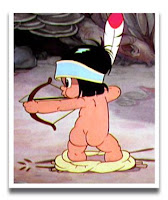





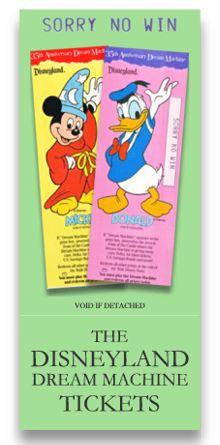
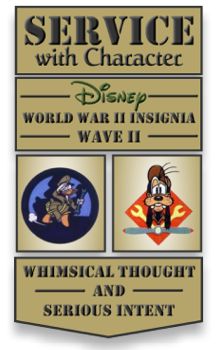
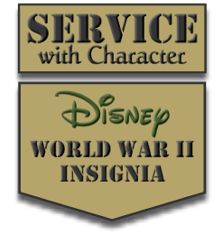




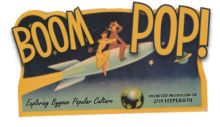






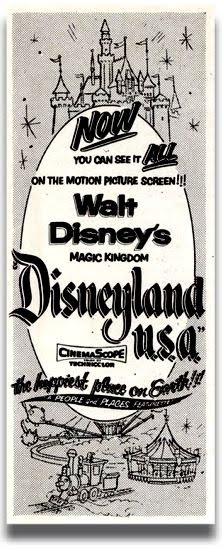
1 comments:
Interesting article on one of those characters you always just sorta' see around.
In a way, I'm kind of glad that the Hiawatha film was never made. After doing a whole research paper on the representations of Native Americans in Disney films in the post-war period, I'm not confident that it would be anything but an embarassment today. In many ways, I'm suprised that Peter Pan gets away with what it does (a combination, I imagine, of it being so insulated by it's classic status coupled with the relative lack of political power held by Native Americans).
Artistically it might have been interesting, but morally, historically and politically there could have been so much wrong with it.
Post a Comment